Northumberland Yesterday And To Day, Jean F. Terry [learn to read activity book .txt] 📗
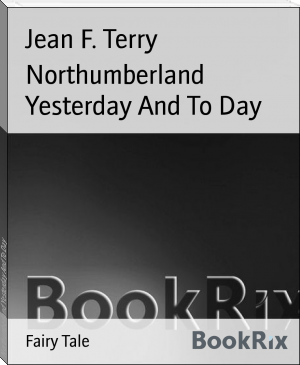
- Author: Jean F. Terry
Book online «Northumberland Yesterday And To Day, Jean F. Terry [learn to read activity book .txt] 📗». Author Jean F. Terry
Short Stroll One May Visit The Pin Well, A Wishing Well Of Which There
Are So Many Examples To Be Found Wherever One May Travel; The King's
Chair, A Porphyry Crag On The Hill Above The Pin Well; Maiden Castle,
Or, Less Euphoniously, Kettles Camp, An Ancient British Encampment On
The Same Hill, The Kettles Being Pot-Like Cavities In The Ravines
Surrounding It; And The Cup And Saucer Camp, Just Half A Mile Distant
From Wooler. The Golf Course Is Now Laid Out On These Same Heights.
To Reach The Cheviots From Wooler, The Most Usual Way Is By The
Beautiful Glen In Which Lies Langleeford. The Bright Streamlet Known As
The Wooler Water Runs Through It From Cheviot On Its Way To The Town
From Which It Has Taken Its Present Name; Formerly It Was Known As
Caldgate Burn. It Was At Langleeford That Sir Walter Scott Stayed, As A
Youth, In 1791, With His Uncle, After They Had Vainly Attempted To Find
Accommodation In Wooler. Here They Rode, Fished, Shot, Walked, And Drank
The Goat's Whey For Which The District Was Famous In Those Days And For
Long Afterwards.
Cheviot Itself, Or "The Muckle Cheviot," Is A Huge Cumbrous-Looking
Mass, With Rounded Sides And Flat Top, Boggy And Treacherous, Where,
Nevertheless, Many Wild Berries Brighten The Marshy Flats In Their
Season. The Name "Cheviot" Is Said To Mean "Snowy Ridge" And Well Does
This Highest Summit Of The Range Merit The Name, For On Its Marshy Top
And In The Rocky Chasms Of Henhole And Bazzle, The Winter's Snow Often
Lies Until Far Into The Summer. Down Through The Weird And Fairy-Haunted
Cleft Of Henhole, As We Have Seen, The Little Brown Stream Of Colledge
Water Splashes Its Way, Breaking Into Golden Foam Between Mossy Banks As
It Reaches The Outlet, And Turns Northward To Join The Till.
This Little Burn Is One Of The Prettiest Of Mountain Streams; And In The
District Surrounding It Are Perhaps More Points Of Interest Than Any
Other Stream Of Such Inconsiderable Dimensions Can Show, Saving Only Its
Neighbour, The Till. The Whole Of The Surrounding Country, Wild, Lonely,
And Romantic, Teems With Memories And Reminders Of The Past. Sir Walter
Scott, While On The Visit Already Referred To, Found An Additional
Pleasure In The Presence Of So Many Relics Of Ancient Days In The
Neighbourhood. "Each Hill," He Wrote To A Friend, "Is Crowned With A
Tower, Or Camp, Or Cairn, And In No Situation Can You Be Near More
Fields Of Battle."
Indeed, The Whole District Of The Cheviots, And The Lower Lines Of
Swelling Hills Into Which The Land Subsides As It Nears The Sea, Is
Crowded With The Memorials Of An Earlier Race; From Every Hill-Top And
Rocky Height They Speak With Tantalising Half-Revelations Of That Race
Which The Romans Found Here When Their Galleys Brought Them To The Land
Which Was To Them Ultima Thule. No Convincing Explanation Has Yet Been
Found Of The Concentric Circular Markings, With Radiating Grooves From
The Cup-Shaped Hollow In The Middle, Which Are Scored On The Rocks
Wherever Traces Of An Ancient Camp Are Found; And The Numbers Of These
Traces Are Proof That This District Was Once A Very Thickly Populated
Part Of Britain.
And When Angle And Saxon Were Driving The Early Inhabitants Before Them,
Westward And Southward, These Hills And Valleys Still Sheltered A
Considerable Population; And Bede Tells Us Of A Royal Residence Not Far
Away, At The Foot Of The Well Known Yeavering Bell, One Of The More
Important Hills Of The Range. It Rises To A Height Of More Than 1,100
Feet, And Then Abruptly Ends In A Wide, Almost Level Top, Grass-Grown
And Boulder-Strewn, And Crowned Near The Centre With A Roughly-Piled
Cairn. The Ancient Name Of Yeavering Bell, As Given By Bede In His
Account Of The Labours Of St. Paulinus, Was Ad-Gefrin.
To Recall The Days When King Edwin And His Queen, Ethelburga, Came Here
From The Royal City Of Bamburgh, We Must Go Back To A Time Nearly Forty
Years After The Bernician Chieftain, Ida, Established Himself In That
Rocky Fortress, From Whence He Ruled A District Roughly Corresponding To
The Present Counties Of Durham And Northumberland, And Known As
Bernicia. One Of Ida's Successors, Ethelric, Overcame The Tribe Of
Angles Then Established In The Neighbouring District Of Deira--The
Yorkshire Of To-Day. His Successor, Ethelfrith, Ruled Over The United
District, And Married The Daughter Of Ella, The Vanquished Chieftain.
Her Brother, Edwin, He Drove Into Exile, And The Young Prince Found
Refuge At The Court Of Redwald Of East Anglia, Where He Remained For
Some Years.
Redwald's Friendship, However, Does Not Seem To Have Been Above
Suspicion, For We Find That Ethelfrith's Bribe Had On One Occasion
Nearly Induced Him To Give Up His Guest, Whose Life, However, Was Saved
By Redwald's Wife Who Turned Her Husband From His Purpose. In His Exile
The Thoughts Of The Young Prince Often Turned Towards His Own Land; And,
Once, As He Sat Brooding Over His Misfortunes, He Saw In A Vision One
Who Came And Spoke Comforting Words To Him, Saying That He Should Yet Be
King And That His Reign Should Be Long And Glorious. "And If One Should
Come To Thee And Repeat This Sign," Said The Stranger, Laying His Right
Hand On Edwin's Head "Wouldst Thou Hearken To His Rede?" Edwin Gave His
Word, And The Vision Fled. Some Little Time After This, Ethelfrith Of
Northumbria, As The United Districts Were Now Called, Fell In Battle
Against Redwald, And Edwin, Returning Northward, Became Ruler Of
Northumbria, The Sons Of Ethelfrith Fleeing In Their Turn Before The New
King. Edwin Wedded, As His Second Wife, Ethelburga, Daughter Of That
King Of Kent In Whose Days Augustine Came To England; And Being A
Christian Princess, She Brought With Her A Priest To Her New Home In The
North. The Priest's Name Was Paulinus; And One Day He Went To The King
And, Placing His Right Hand On Edwin's Head, Asked If He Knew That Sign.
Edwin Remembered, And Redeemed His Promise. He Hearkened To The Teaching
Of The Earnest Monk, With The Result That Before Long He And His Court
Were Baptised By Paulinus, Edwin's Little Daughter, It Is Said, Being
The First To Receive The Sacred Rite.
This Was At York; And When The King And Queen Went To The Royal City Of
Bamburgh, Or To Their Country Dwelling At The Foot Of The Cheviots,
Paulinus Accompanied Them; And Wherever He Went, He Laboured To Teach
The North-Country Angles And Saxons The Gospel Of Christ. This Country
Dwelling, To Which Came Paulinus And His Royal Friends, Was Ad-Gefrin,
Or Yeavering; And Though It Is Extremely Unlikely That Any Traces Of It
Could Remain Until Our Day, Yet Tradition Points Out A Fragment Of An
Old Building Still Standing There, As A Remnant Of The Royal Residence.
In The Region Of Kirknewton, A Pretty Little Village To The North-West
Of Yeavering, Where Colledge Water Joins The Glen, Which Gives Its Name
To The Romantic District Of Glendale, Paulinus Baptised Many Hundreds Of
Edwin's People; And The Name Of Pallinsburn--Which Is Now Confined To A
House At Some Little Distance From The Burn--Enshrines The Memory Of
Yet Another Scene Of The Labours Of The Indefatigable Monk.
If We Stand On The Wind-Swept Top Of Yeavering Bell, We Are Surrounded
By The Evidences Of Still More Remote Days, For The Whole Of The Summit
Was Once A Fortified Camp Of The Ancient Britons. A Roughly-Piled, But
Massive Wall, Now Almost All Broken Down, Surrounded It, And Within Its
Grass-Grown Oval Are Two Additional Walls, At The East And The West Ends
Of The Enclosure, And Many Hut-Circles, Evidences Of The Rude Dwellings
Of Our Remote Ancestors. Excavations Here Many Years Ago Brought To
Light A Jasper Ball, Some Fragments Of A Coarse Kind Of Pottery, And
Some Oaken Armlets. Evidently The Enclosure On The Summit Was Intended
To Be A Last Resort In Time Of Danger, For Traces Of Many Huts Are To Be
Found Outside Its Encircling Wall, Which Is Surrounded By A Ditch And A
Low Rampart Of Earth. At The East End, Where The Porphyry Crag Juts Out
From The Hilltop To A Height Of About Twenty Feet, Full Advantage Has
Been Taken Of This Naturally Strong Position.
Now, Instead Of Advancing Foes, The Spreading Heather Climbs Steadily Up
The Sloping Sides Of This Ancient Stronghold, And Invades The Central
Enclosure At Its Will; A Few Hardy Sheep That Have Wandered Up Here From
The Richer Pastures Below, And Now And Again A Stray Tourist, Anxious To
Make Acquaintance At First Hand With One Of The More Famous Of The
Cheviot Heights, And More Than Satisfied With The Glorious View Spread
Out Before Him, Are All That Disturb The Brooding Peace Of Its Grassy
Solitudes. Up Here The Wind Blows Keenly Around Us With An Exhilarating
Freshness In Its Breath, And We Think Regretfully Of Coats Left Behind
At The Shepherd's Hospitable Dwelling, Which, With The Rest Of The
Cottages Clustering Round The Old Farm House, Lies Sunning Itself In The
Warm Glow Of The September Afternoon, In The Green Fields At The Foot
Of The Sheltering Hills.
Looking Southward Now, Up The Stream, There Is Stretching Away To The
Left The Long Ridge Of Newton Tor, And Away Behind It Great Hetha And
Little Hetha; While Half-Way Down The Vale The Colledge Water Tumbles
Over The Rocks At Hethpoole Linn (Or Heathpool, As The Modern Rendering
Has It), Breaking Into Amber Spray Deep Down Beneath Overhanging Trees
And Boulders And Golden Bracken.
This Brings Our Thoughts To Days Comparatively Modern, For When Admiral
Collingwood Was Raised To The Peerage Of Great Britain, It Was By The
Title Of "Baron Collingwood Of Caldburn And Hethpoole, In The County Of
Northumberland." The Brave Admiral Was Fond Of Planting An Oak Tree
Whenever He Found An Opportunity, To Secure The Continuance Of Those
Wooden Walls Which In His Hands, And In Those Of His Life-Long Friend,
Nelson, Had Proved Such A Sure Defence To His Country. In A Letter Dated
March, 1806, He Wrote To His Wife, "I Wish Some Parts Of Hethpoole Could
Be Selected For Plantations Of Larch, Oak, And Beech, Where The Ground
Could Best Be Spared. Even The Sides Of A Bleak Hill Would Grow Larch
And Fir." In Another Letter Some Months Later He Told Her What
"Agreeable News" It Was To Hear That She Was Taking Care Of His Oaks,
And Planting Some At Hethpoole; And Saying That If He Ever Returned He
Would Plant A Good Deal There; Adding, However, That He Feared Before
That Could Take Place Both He And Lady Collingwood Might Themselves Be
Planted In The Churchyard Beneath Some Old Yew Tree.
Hethpoole Presents Us With A Link Not Only With History, But With
Romance As Well. An Ivied Ruin Near At Hand, With Walls Of Enormous
Strength, Is Said To Be The Remains Of The Castle Where The Final
Tragedy In "The Hermit Of Warkworth" Took Place. Here, It Is Said, The
Distracted Lover Came Upon His Lady And His Brother, Who Had At That
Moment Effected Her Escape, And Not Recognising The Youth, Rushed Upon
The Pair With Drawn Sword, Only To Discover Too Late His Terrible
Mistake, And Lose Both Brother And Bride--For The Lady Received A Mortal
Wound In Trying To Save Her Rescuer.
Turning Our Eyes Now Northward Across The Glen From Yeavering Bell, We
Are Looking Towards Coupland Castle, And The Fact That It Was Built So
Late As The Reign Of James I. Bears Eloquent Testimony To The Insecurity
Of Life And Property On The Borders Even At That Period. The Barony
Either Gave Its Name To, Or Took Its Name From, A Well-Known
Northumbrian Family, Of Which One Of The Most Prominent Members Was That
Sir John De Coupland Who Succeeded In Capturing David Of Scotland At The
Battle Of Neville's Cross--Not, However, Before He Had Lost Some Of His
Teeth By A Blow From The Mailed Fist Of That Doughty Monarch!
Beyond Coupland Castle We Look Across Milfield Plain Lying In The Angle
Formed By The Meeting Of The Glen With The Deep And Sullen Till, Whose
Slow Windings Can Be Traced As It Gleams At Intervals Between The
Undulations Of The Lower Hills Through Which It Flows Northwestward To
The Tweed. Though A Brisk And Sparkling Stream In Certain Parts Of Its
Course, The General Characteristics Of The Till Are Well Borne Out By
The Lines--
Tweed Says To Till
"What Gars Ye Rin Sae Still?"
Till Says To Tweed
"Though Ye Rin Wi' Speed
And I Rin Slaw;
Where Ye Droon Ae Man
I Droon Twa."
There Is Yet More Of Historical And Traditional Interest To Note In This
View From The Top Of Yeavering Bell, Which, As I Saw It Last, Lay Warm
In The Glow Of A September Afternoon. Nennius Is Our Authority For
Stating That On Milfield Plain
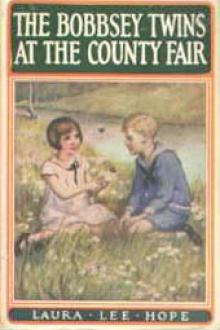
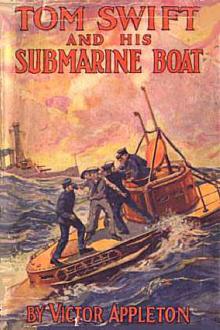

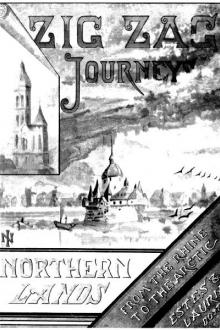
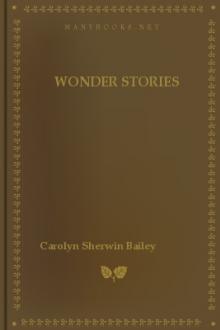
Comments (0)